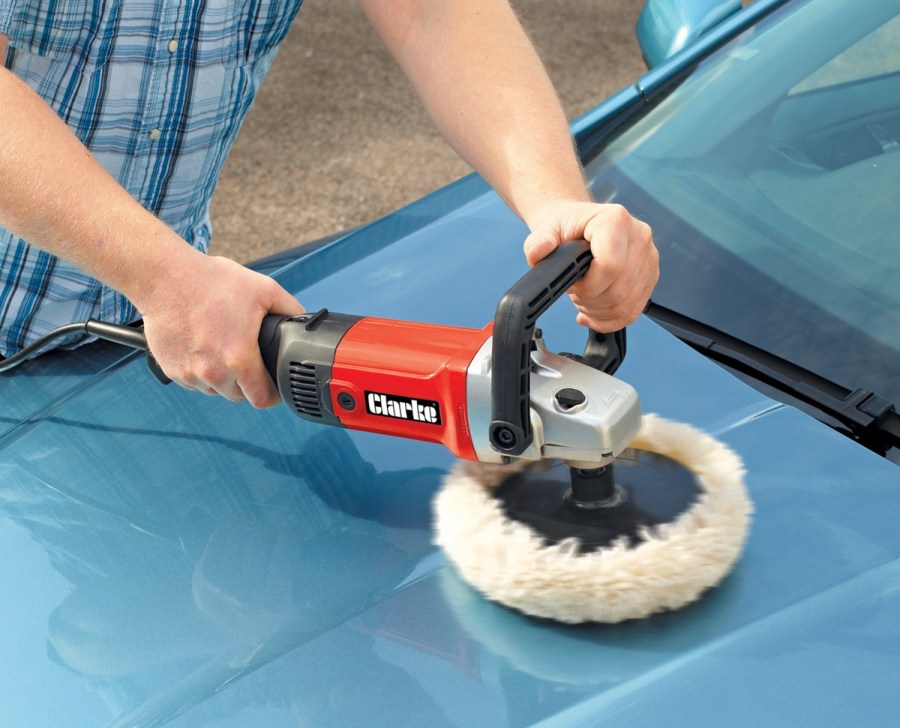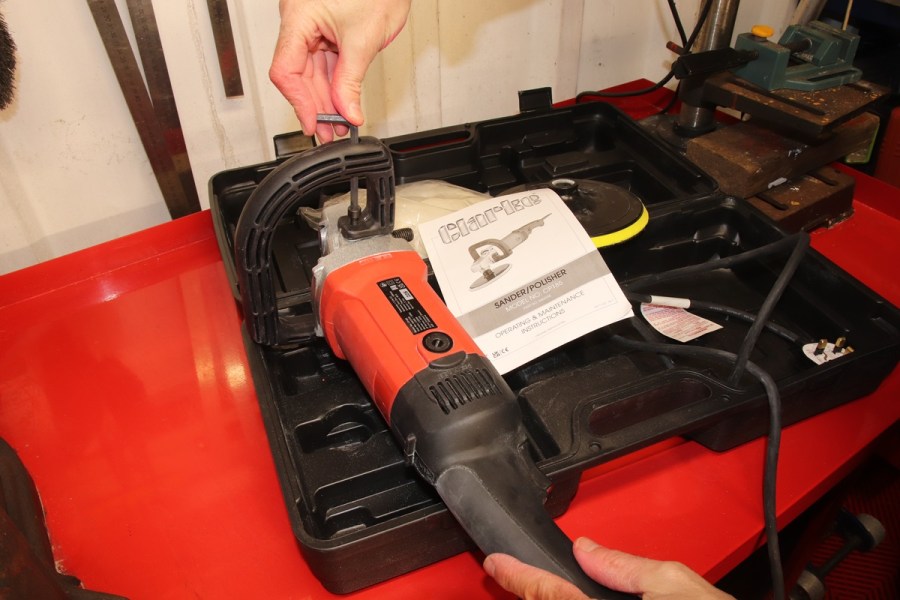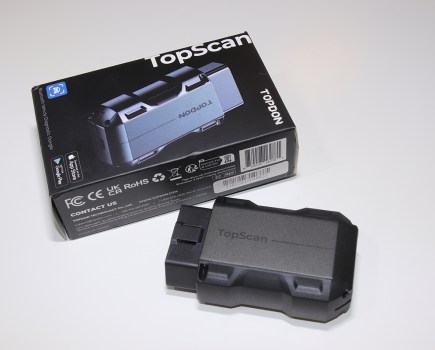This entry-level sander and polisher is part of Machine Mart’s Clarke range of power tools. Powered by mains electricity, it has everything to get you buffing and is supplied in a large plastic carrycase. There’s a hook and loop backing pad, a sponge pad and polishing bonnet. And there’s even a tool to attach a handle, plus a spare set of brushes. So, on paper, it seems like a good tool for applying car polish.
I had my 1976 Volkswagen Bay Window campervan ready to test this polisher on. Its red paintwork had lost its shine in places, so would this polisher revive it?
RRP: £89.99, buy it here.
What’s in the box?
The Clarke CP185 sander & polisher is supplied in a large plastic carrycase. It locks shut with a couple of flimsy-looking plastic catches, that don’t look particularly substantial. I’ve seen these before and they generally don’t last long before one or both of them break off. In fact, I have the same ones on the box of a Clarke trolley jack. I confess I snapped them off when I accidentally closed the lid on them and wasn’t looking.
There’s a separate plastic D-handle to secure to the body of the sander & polisher with two hex screws. And a hex tool is supplied to fit those screws. I found it quite a struggle to maneuver the handle into position to line up the mounting holes. And if you intend to store the equipment in its case, the handle will need to be removed.
A comprehensive user manual outlines how to use the equipment. It also lists the spares available for it with an exploded diagram of the body. There’s even a fault-finding table and instructions on replacing the brushes (a spare set is included).
The power lead is very short at 6ft or 1.83m long. So an extension lead is usually required when working around a vehicle. Plus, the lead can easily drag over the paintwork because it’s so short.
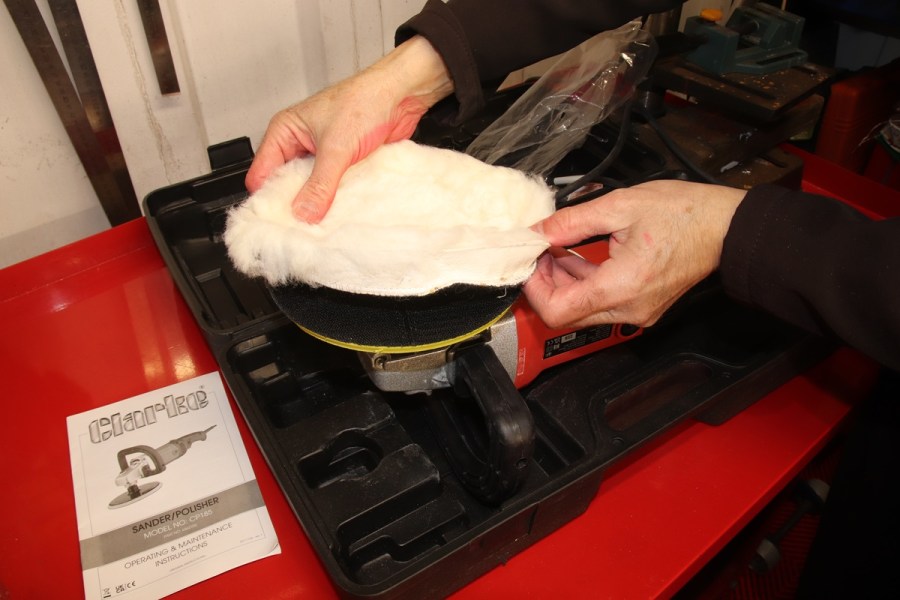
Tech spec
This sander & polisher has six speed settings ranging from 600rpm to 3,000rpm. Each one is selected via a dial on the top of the body, which is numbered from 1 to 6.
The diameter of the polishing bonnet is 180mm, which is a standard size. Consequently, there are lots of different types of pads that can be fitted. It’s a shame a sponge pad isn’t included, especially considering this appeals to beginners who often need everything.
I noticed that Machine Mart doesn’t sell any individual 180mm-diameter sponge pads, only 150mm. They do sell a comprehensive kit of sanding discs with 180mm polishing pads and bonnets for £20.39. So you may wish to shop around for more sponge pads, or use the smaller 150mm-diameter ones from Machine Mart.
The supplied backing pad is threaded on to the spindle that protrudes from the body of the polisher & sander. There’s a lock button on the top of the body should the spindle rotate when fitting the backing pad.
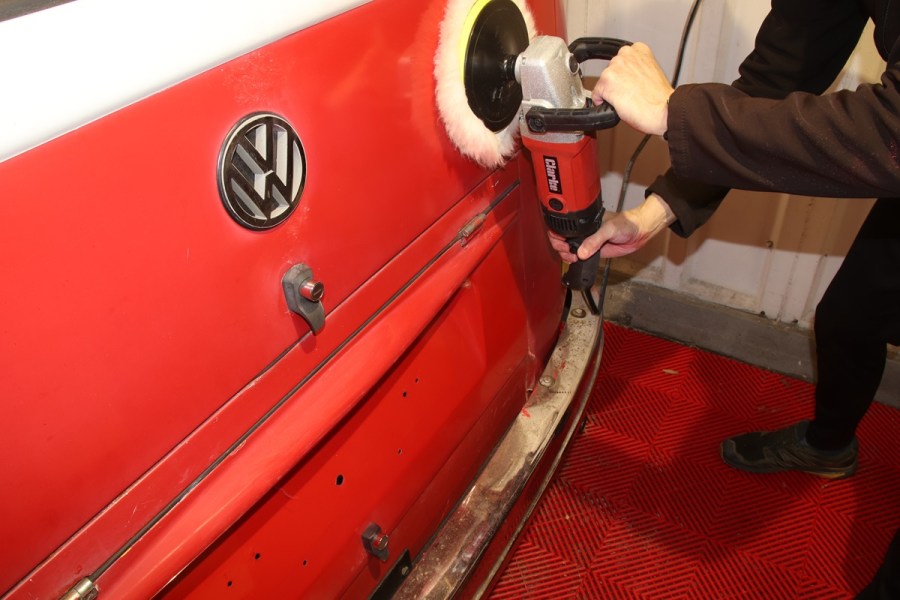
Using the Clarke CP185 Sander & Polisher
With speeds ranging from 600rpm to 3,000rpm, this machine is seemingly well-suited for polishing. And it’s easy to adjust the dial for those speeds when using the machine. Sadly, it’s very noisy, so you will need ear plugs or defenders. I managed to polish several areas of paintwork using the supplied polishing bonnet. I was careful with how much polish was applied. Too much may make the bonnet wet, which could create swirl marks.
The weight of the polisher is noticeably heavy at 8.2lb (3.7kg). It’s not so bad on flat horizontal surfaces because you can support and guide the polisher. On vertical surfaces it’s quite a handful to hold.
As a sander, this machine is far too aggressive. I wanted to key the gloss paint on the wooden front door of my house. Using a 120-grit sanding paper, it swiftly took the finish back to bare wood.
As a polisher, I like the progressive start-up of the motor that’s gentle to begin with. Under operation, the trigger can be locked on, so you don’t have to keep it pressed when polishing.
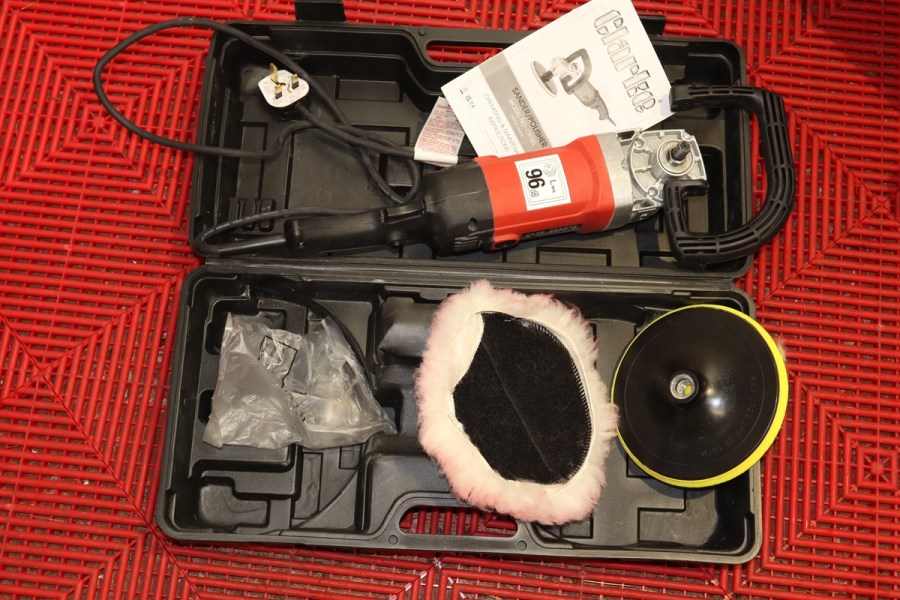
Verdict
The Clarke CP185 sander & polisher is competitively priced. It’s let down by flimsy catches on its plastic carrycase, the lack of a sponge pad, excessive noise and weight. If you want to strip paint, it’s perhaps a good sander. As a polisher or for rectifying paint damage, it’s heavy and you’ll need to buy a sponge pad.

